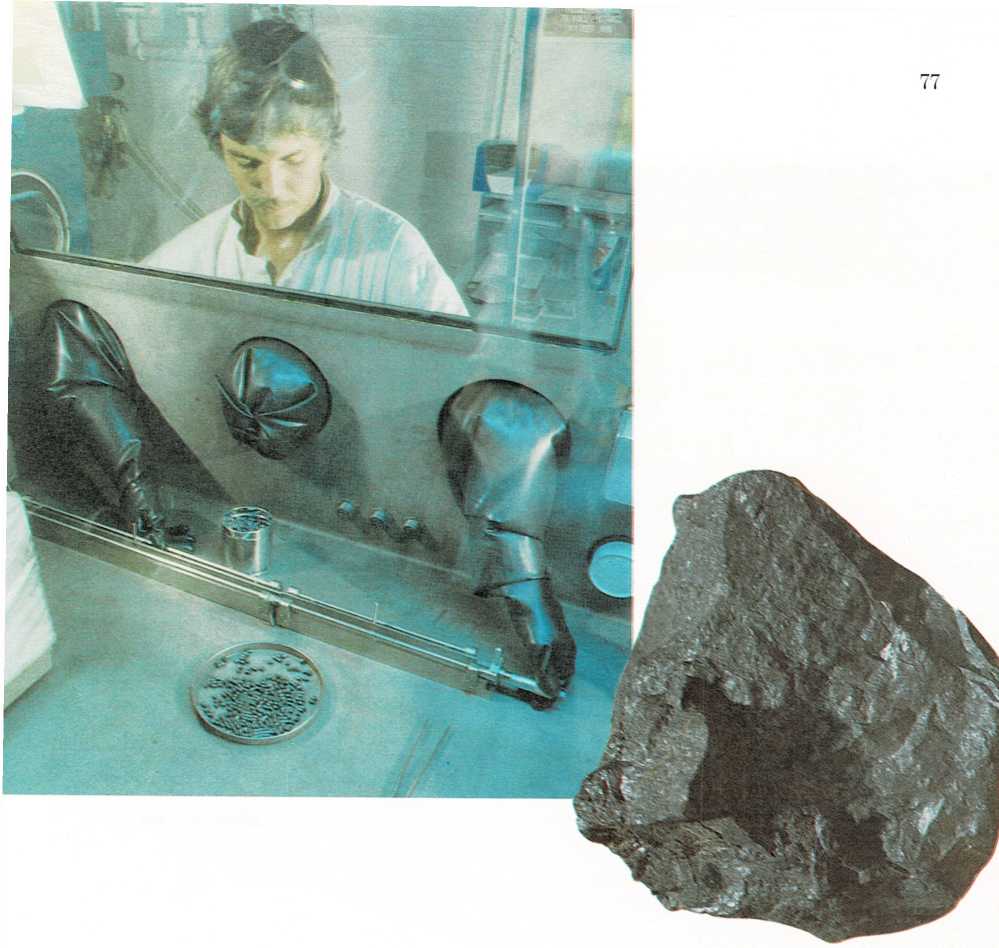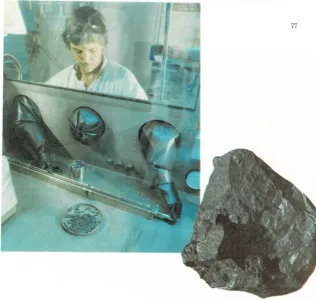The Atomic Age mineral
The prospector moved slowly across a rocky, desert hillside. He was
searching for a very valuable mineral. But he had no pick or shovel. As
he walked along, he held a metal tube over the rocks. A wire connected
the tube to a metal box he carried in his other hand.
Suddenly, a popping noise came from the box. Then another. Then the pops
came so rapidly they sounded like a machine gun. The prospector let out
a whoop of joy. He had found the mineral—uranium.
Uranium is a mineral that is the main source of atomic energy. It is a
metal that is radioactive. This means that, in a way, it is
“exploding”—that it shoots out tiny bits of itself in all directions.
These tiny bits are parts of the atoms of which uranium is made. They
are so small they cannot be seen with even the most powerful microscope.
But they can be discovered by a machine called a Geiger counter.
It’s a Fact
Uranium is a radioactive metal. This means that it is constantly
“exploding,” or shooting tiny bits of itself out in all directions.


pieces of uranium
The technician is loading uranium fuel into rods that will be used in
a nuclear power plant.
uranium ore
(pitchblende)
Uranium is never found by itself. It is always mixed with other
minerals. Prospectors usually look for it in a mineral called
pitchblende. Pitchblende is a lumpy black rock that shines like fresh
tar. It is found near the top of the ground. Uranium is also found in a
powdery, yellowish mineral called carnotite that forms in a thick coat
on sandstone and other rocks.
When uranium is taken out of pitchblende or carnotite, it is a heavy,
silver-gray metal. Copper is the metal of the Bronze Age, and iron is
the metal of the Iron Age and Steel Age, but uranium is the metal of the
Atomic Age—which has just begun.

